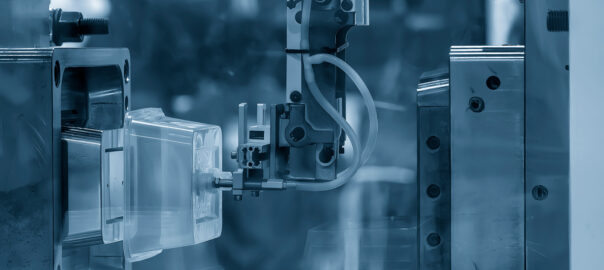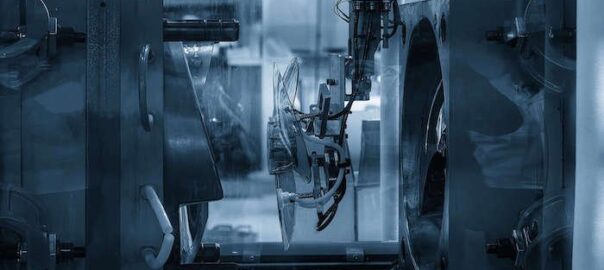As electric vehicles (EVs) and hybrid electric vehicles (HEVs) gain momentum, manufacturers are constantly seeking new ways to improve efficiency, reduce weight, and enhance vehicle performance. One of the key areas of focus in EV and HEV design is the battery tray—the structure that houses and protects the battery pack. Traditionally, battery trays have been made from metals like aluminum or steel, but recent advancements in high-performance plastics have opened the door to using plastic injection molding materials as a viable alternative to metals.
This article will explore the benefits, material considerations, design challenges, and applications of plastic battery trays in electric and hybrid vehicles, and how they can effectively replace metal components while offering significant advantages.
Why Replace Metals with Plastics in Battery Trays?
Battery trays play a critical role in EV and HEV platforms, providing structural support for the battery pack, protecting it from external impacts, and helping to manage temperature control. Traditionally, metals like aluminum and steel have been used for these trays due to their strength and durability. However, plastics are increasingly being considered as a replacement material due to several key advantages:
-
Weight Reduction:
Plastics are significantly lighter than metals, which helps reduce the overall vehicle weight. Since EVs and HEVs rely on battery power, reducing weight translates directly into improved energy efficiency, longer range, and lower energy consumption. -
Cost Efficiency:
Manufacturing battery trays from plastic is often more cost-effective than metals due to lower material costs, ease of mass production, and the potential for integrating multiple parts into a single mold, reducing assembly costs. -
Corrosion Resistance:
Unlike metals, plastics are naturally resistant to corrosion, which enhances the longevity and durability of the battery tray, especially in harsh environments (e.g., exposure to road salt, moisture, or chemicals). -
Design Flexibility:
Plastics offer greater flexibility in design, allowing for complex geometries, integrated components (e.g., wiring harnesses, thermal management systems), and multi-functional designs, all of which are more difficult to achieve with metals. -
Thermal Insulation:
Plastics can provide better thermal insulation compared to metals, which is critical in EV battery trays to help regulate battery temperature, prevent overheating, and ensure efficient operation of the battery pack.
Key Materials for Plastic Battery Trays
To replace aluminum or other metals in battery tray applications, the selected plastic materials must meet stringent performance requirements. High-performance engineering plastics are often reinforced with fillers like glass fibers or carbon fibers to enhance their strength, rigidity, and thermal properties.
Common Plastics Used for Battery Trays:
-
Polyamide (PA, Nylon):
Glass-filled nylon is widely used in automotive components due to its excellent strength-to-weight ratio, thermal stability, and chemical resistance. Nylon is also naturally resistant to moisture, making it suitable for battery trays that need to withstand environmental exposure. -
Polypropylene (PP):
Reinforced polypropylene offers good mechanical properties, excellent chemical resistance, and the ability to integrate multiple parts into a single injection-molded component. Its lightweight nature makes it an attractive choice for replacing metals in non-structural battery trays. -
Polyphenylene Sulfide (PPS):
PPS is a high-performance thermoplastic known for its strength, thermal stability, and resistance to chemicals and high temperatures. It is ideal for battery trays that require thermal insulation and exposure to extreme heat during operation. -
Polycarbonate (PC):
Polycarbonate, often used in combination with glass fibers for reinforcement, offers excellent impact resistance and flame-retardant properties, making it suitable for battery trays in EVs that require both safety and structural support. -
Thermoplastic Composites:
Thermoplastic composites, such as carbon fiber-reinforced plastic (CFRP), provide exceptional strength and stiffness at a fraction of the weight of metals. These materials are increasingly being considered for critical structural applications, including EV battery trays, where both performance and weight savings are crucial.
Design Considerations for Plastic Battery Trays
Designing a plastic battery tray requires balancing mechanical performance, safety, thermal management, and manufacturability. Here are some key design considerations:
1. Structural Integrity:
The plastic material must be reinforced to handle the load and stresses of supporting a heavy battery pack while maintaining the overall structural integrity of the vehicle. Advanced design techniques, such as ribbing, honeycomb structures, and fiber reinforcements, can be used to enhance stiffness and strength while minimizing weight.
2. Thermal Management:
Effective thermal management is crucial to maintaining battery performance and longevity. Plastic battery trays need to incorporate features like cooling channels, heat sinks, or phase-change materials to dissipate heat effectively. Thermally conductive plastics or the addition of heat-conducting inserts can also be used to regulate temperature.
3. Flame Resistance:
Since EV batteries can pose a fire risk, flame-retardant properties are essential. Plastics used in battery trays must meet stringent flammability standards (such as UL 94 V-0 rating), ensuring that they can prevent the spread of flames in case of a fire. Flame-retardant additives can be incorporated into the resin to improve fire safety.
4. Impact Resistance and Crash Safety:
Battery trays need to withstand external impacts, such as collisions or debris from the road. Plastics must be engineered to absorb impact energy while maintaining the integrity of the battery pack. Crumple zones and energy-absorbing designs can be integrated into plastic trays to improve crashworthiness.
5. Integration of Functional Components:
One of the significant advantages of using plastic over metal is the ability to integrate multiple functions into a single component. Plastic battery trays can incorporate features like mounting points for electronics, cable routing channels, and even thermal insulation layers without the need for additional parts or assembly steps.
6. Environmental Resistance:
Battery trays in EVs are exposed to various environmental factors, such as moisture, dirt, chemicals, and temperature fluctuations. The plastic material must be resistant to corrosion and chemical degradation while maintaining its performance in extreme conditions.
Challenges of Using Plastic in Battery Trays
While the use of plastics injection molding offers several benefits, there are also challenges that must be addressed to ensure success in replacing metals:
-
Strength and Stiffness:
Although reinforced plastics offer good strength, they may not match the stiffness of metals in certain applications. Careful design optimization, such as adding ribs or using composites, is necessary to meet the mechanical demands of structural battery trays. -
Thermal Conductivity:
Plastics are generally less thermally conductive than metals, which can be a disadvantage when trying to dissipate heat from the battery pack. Designers need to account for this limitation by incorporating cooling systems or using thermally conductive additives. -
Cost of High-Performance Plastics:
While the manufacturing process for plastics injection molding can be more cost-effective, high-performance thermoplastics and composites can be expensive compared to conventional materials. However, this cost is often offset by the benefits of weight reduction and integration of multiple components.
Sustainability and Environmental Impact
One of the driving factors behind using plastic injection molding in EV battery trays is the sustainability aspect. Reducing the weight of vehicles improves energy efficiency, lowering the carbon footprint of both manufacturing and operation. Additionally, many plastics used in automotive applications are recyclable, which aligns with the automotive industry’s push toward sustainable and environmentally friendly practices.
Recycling Initiatives:
Many thermoplastic materials can be recycled and reused in secondary applications, reducing the environmental impact. Automotive manufacturers are also developing closed-loop recycling systems to minimize waste and improve resource efficiency.
Applications and Real-World Examples
Several automotive manufacturers and suppliers have already begun integrating plastic battery trays into their EV and HEV platforms. Here are some notable examples:
-
BMW i3: The BMW i3 uses a carbon fiber-reinforced plastic (CFRP) structure for its battery tray, significantly reducing the vehicle’s weight while maintaining safety and structural integrity.
-
Tesla Model 3: Tesla has explored the use of glass fiber-reinforced plastics for components in its battery enclosures, aiming to reduce costs and weight.
-
Volkswagen ID.4: Volkswagen has adopted advanced thermoplastics in some of its battery enclosures to enhance thermal insulation and fire resistance.
Conclusion: The Future of Plastic Battery Trays in EVs
As electric vehicles continue to evolve, the use of plastic battery trays offers a promising solution to enhance vehicle efficiency, reduce weight, and lower manufacturing costs. While there are challenges to overcome, advancements in materials and design optimization are making plastics an increasingly viable replacement for traditional metals like aluminum and steel in battery tray applications.
Om Raj Tech – Your Partner in Advanced Plastic Battery Tray Design
At Om Raj Tech, we specialize in designing and manufacturing plastic components for electric vehicles, including lightweight and durable battery trays. With our expertise in high-performance plastics and advanced injection molding techniques, we can help you develop innovative solutions for EV and HEV applications in injection molding. Contact us today to learn how we can assist in injection molding with your next project.


